Norman Bel Geddes’ compass always pointed forward. From his design of the Palais Royal nightclub in 1922 to his plans for a pilot television studio for NBC in 1954, Bel Geddes proved to be a fearless and imaginative dreamer who was convinced that art, design and architecture enriched people’s lives immeasurably.
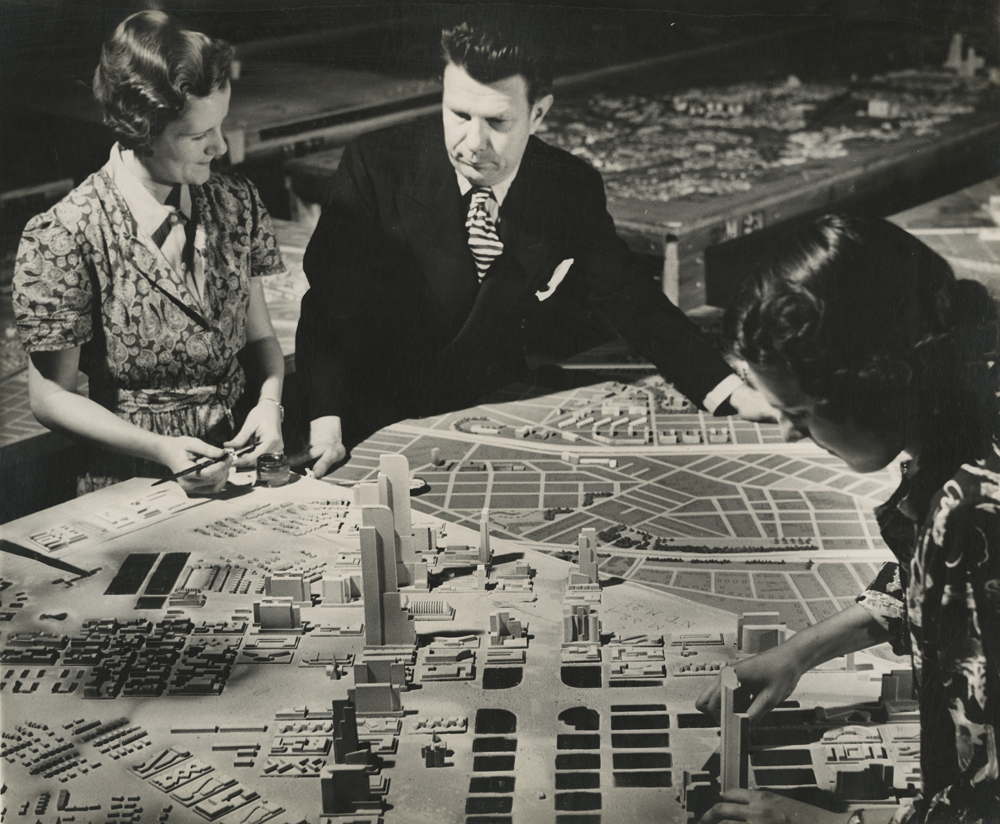
Norman Bel Geddes with Futurama diorama, photograph by Richard Garrison, ca. 1939. Image courtesy of the Edith Lutyens and Norman Bel Geddes Foundation / Harry Ransom Center
The exhibition I Have Seen The Future: Norman Bel Geddes Designs America at the University of Texas Harry Ransom Center includes drawings, artifacts, photographs and films from the archives of this important American visionary who presciently predicted many of today’s design innovations.
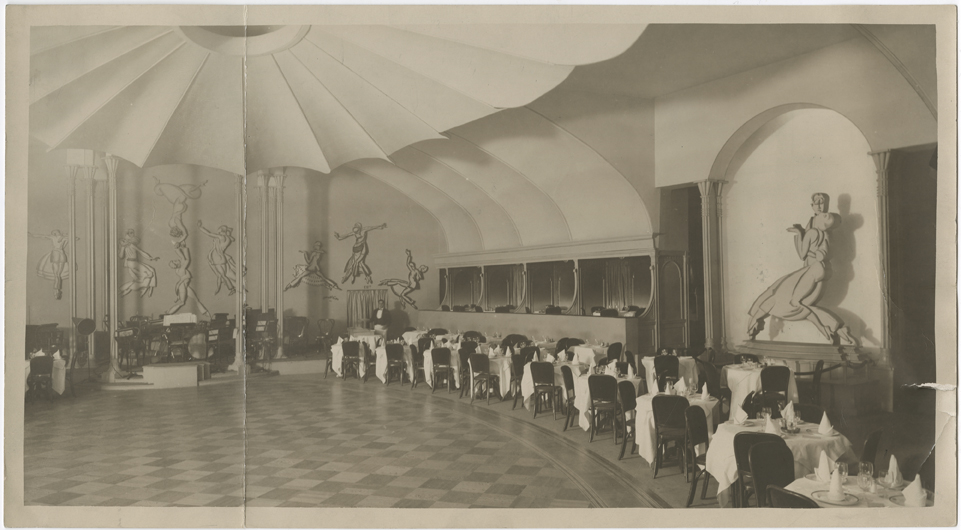
Palais Royal Cabaret Theatre, unidentified photographer, ca. 1922. Image courtesy of the Edith Lutyens and Norman Bel Geddes Foundation / Harry Ransom Center
The scope of Bel Geddes’ prowess is breathtaking. This was a man on fire who knew no boundaries. After being kicked out of high school at the age of 14, Bel Geddes turned first to the theater for his earliest design efforts. Though he is not widely known for his immense contributions to theatrical design, this part of his career is very well represented in the Ransom Center’s exhibition, which includes drawings and photographs of his notable stage set designs, costumes, theatrical lighting inventions and even theaters.

Divine Comedy model with lighting and figures, photograph by Francis Bruguière, 1924.
Image courtesy of the Edith Lutyens and Norman Bel Geddes Foundation / Harry Ransom Center
In 1927 Bel Geddes opened up his own industrial design studio, branching out into architecture and product design. He became an ambitious champion of streamlining through his designs of futuristic cars, airplanes, boats and even an aerial restaurant. He is best known for his innovative design of the General Motors Pavilion at the 1939 New York World’s Fair, which featured his Futurama exhibit predicting “the world of tomorrow” from an urban planning perspective.

Airliner No. 4 (ca. 1929-1932) Image courtesy of the Edith Lutyens and Norman Bel Geddes Foundation / Harry Ransom Center
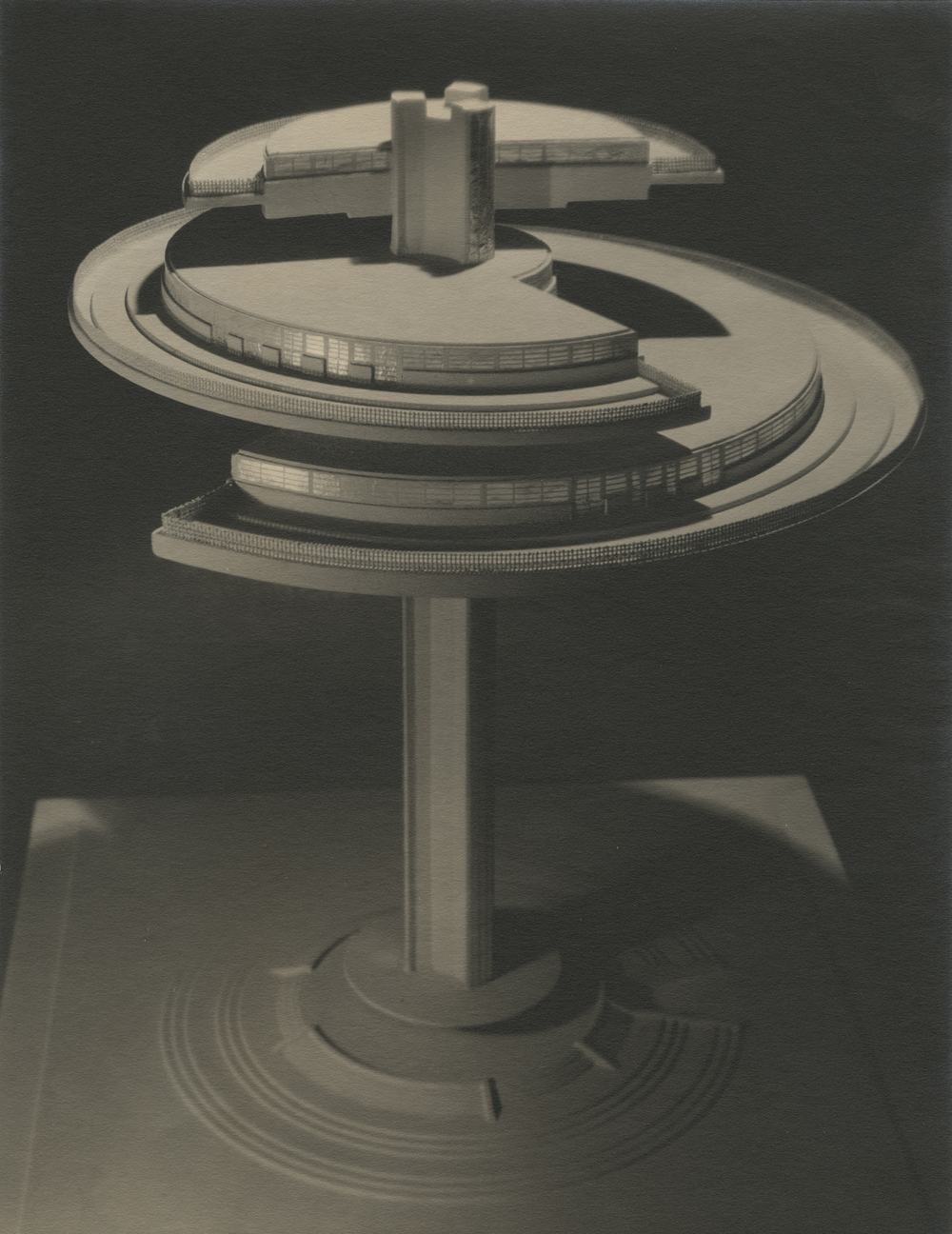
Norman Bel Geddes’s model of the Aerial Restaurant, photograph by Maurice Goldberg, ca. 1930. Image courtesy of the Edith Lutyens and Norman Bel Geddes Foundation / Harry Ransom Center
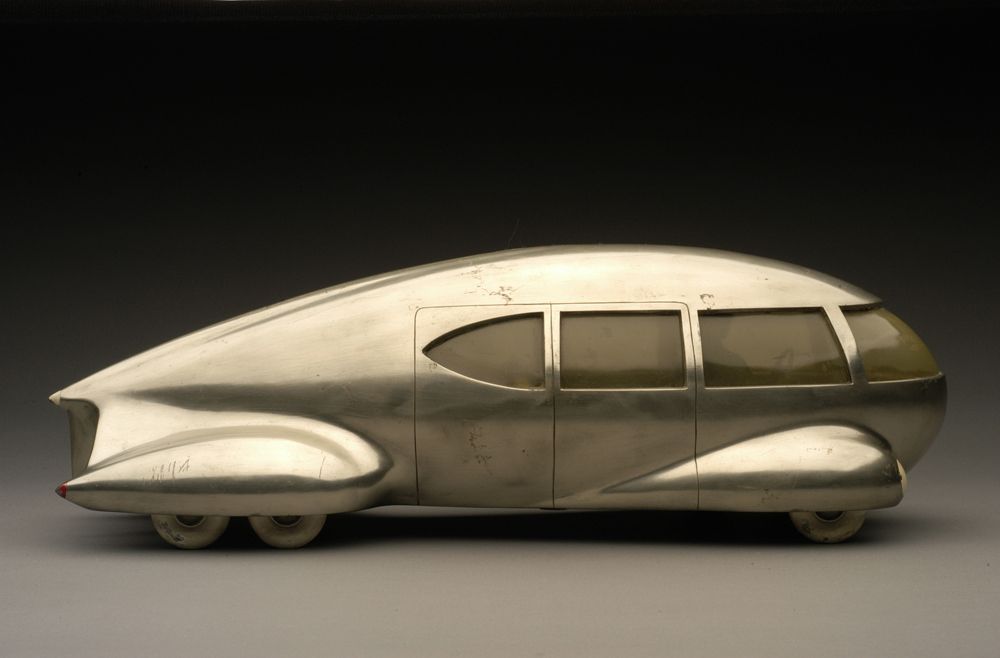
Motor Car No. 9 (without tail fin) (ca. 1933) Image courtesy of the Edith Lutyens and Norman Bel Geddes Foundation / Harry Ransom Center

General Motors building exterior at 1939 New York World’s Fair, unidentified photographer, ca. 1939. General Motors LLC. Used with permission, GM Media Archives.
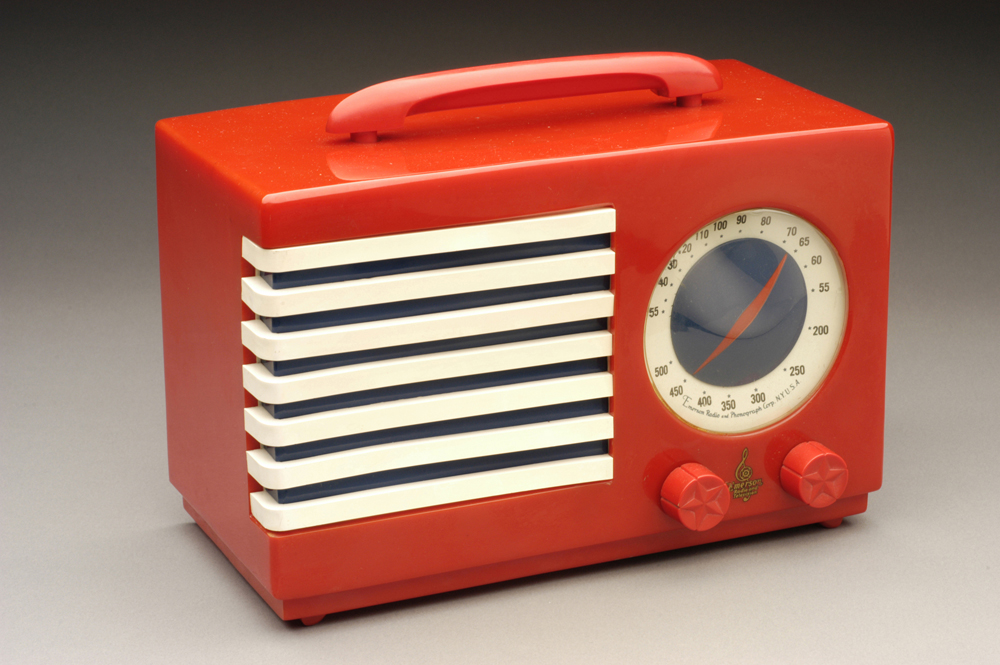
Prototype case for Emerson Patriot radio, ca. 1940-1941. Image courtesy of the Edith Lutyens and Norman Bel Geddes Foundation / Harry Ransom Center
Among my favorite parts of this show are the various films produced by Bel Geddes, including a series of insect and animal studies he made as a youth. Especially hilarious are a series of audio recordings of Bel Geddes predicting what dishwashing, cleaning house, making dinner and watching the baby would be like in the future.
This fascinating exhibit, which closes Sunday, January 6, draws heavily from the Norman Bel Geddes archives, permanently housed at the Harry Ransom Center.
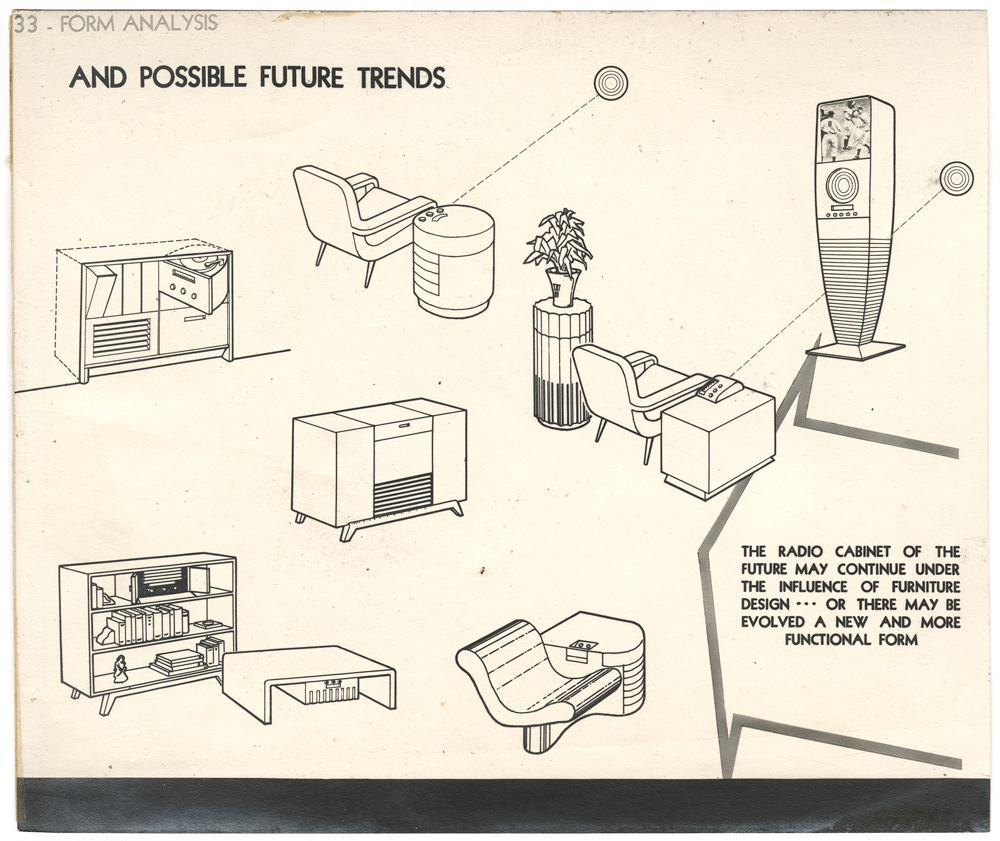
Possible Future Trends for radio and phonograph cabinet design in Norman Bel Geddes & Co. Quarterly Report to R.C.A. Victor Division, Stationary Combinations—Stage 1 (ca. 1942—44) Image courtesy of the Edith Lutyens and Norman Bel Geddes Foundation / Harry Ransom Center
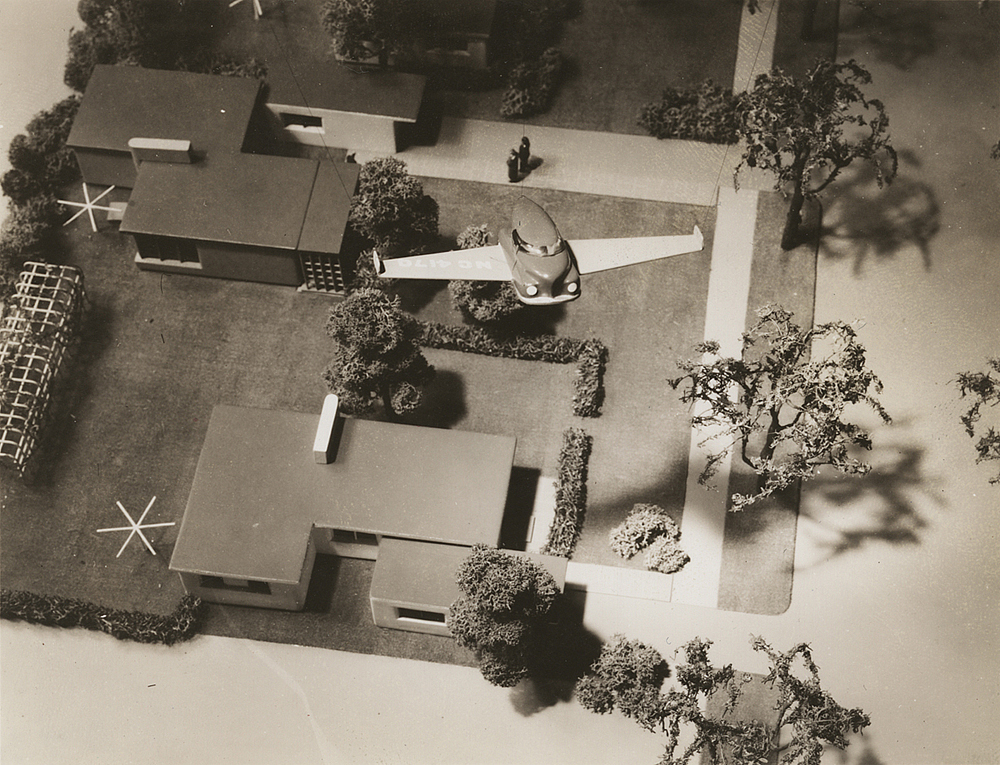
Aerial view of Bel Geddes flying car over model neighborhood, unidentified photographer, ca. 1945. Image courtesy of the Edith Lutyens and Norman Bel Geddes Foundation / Harry Ransom Center


